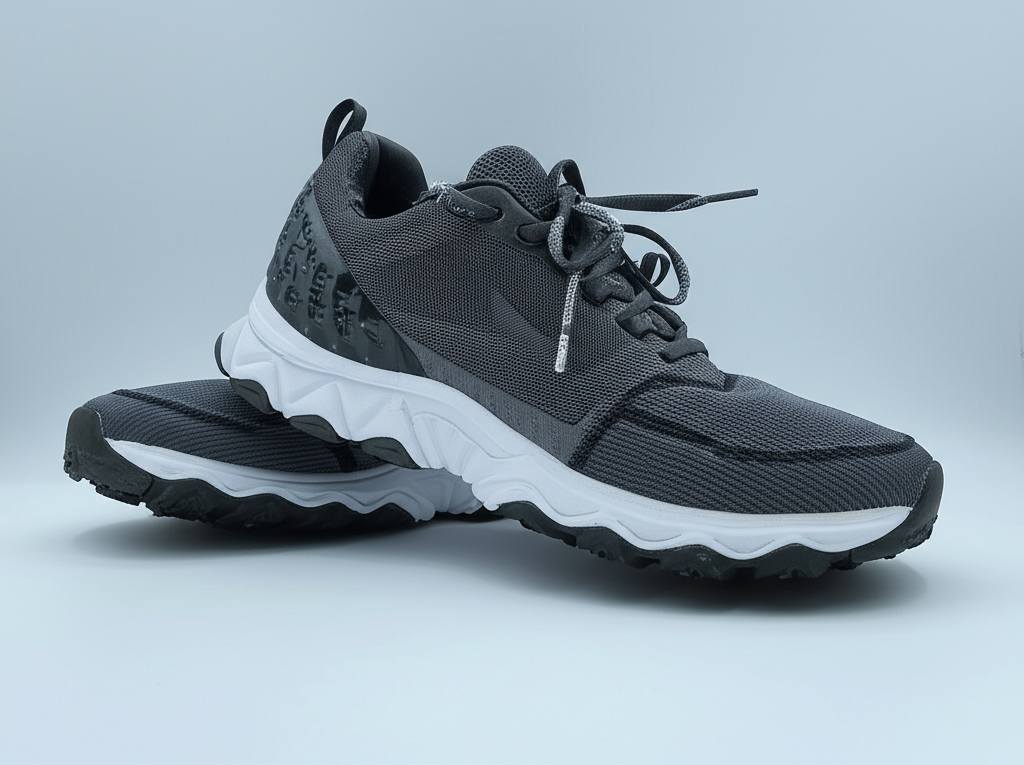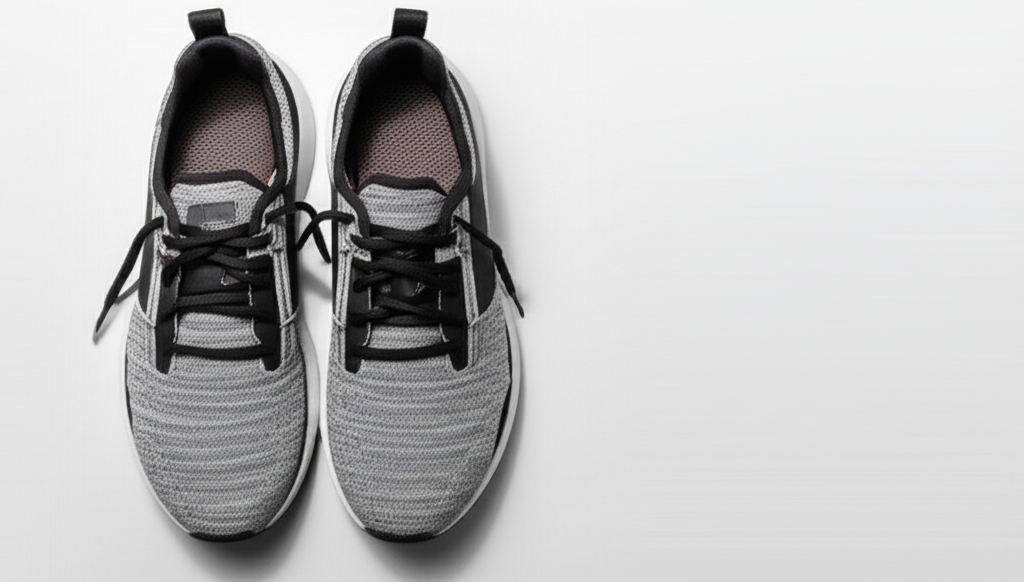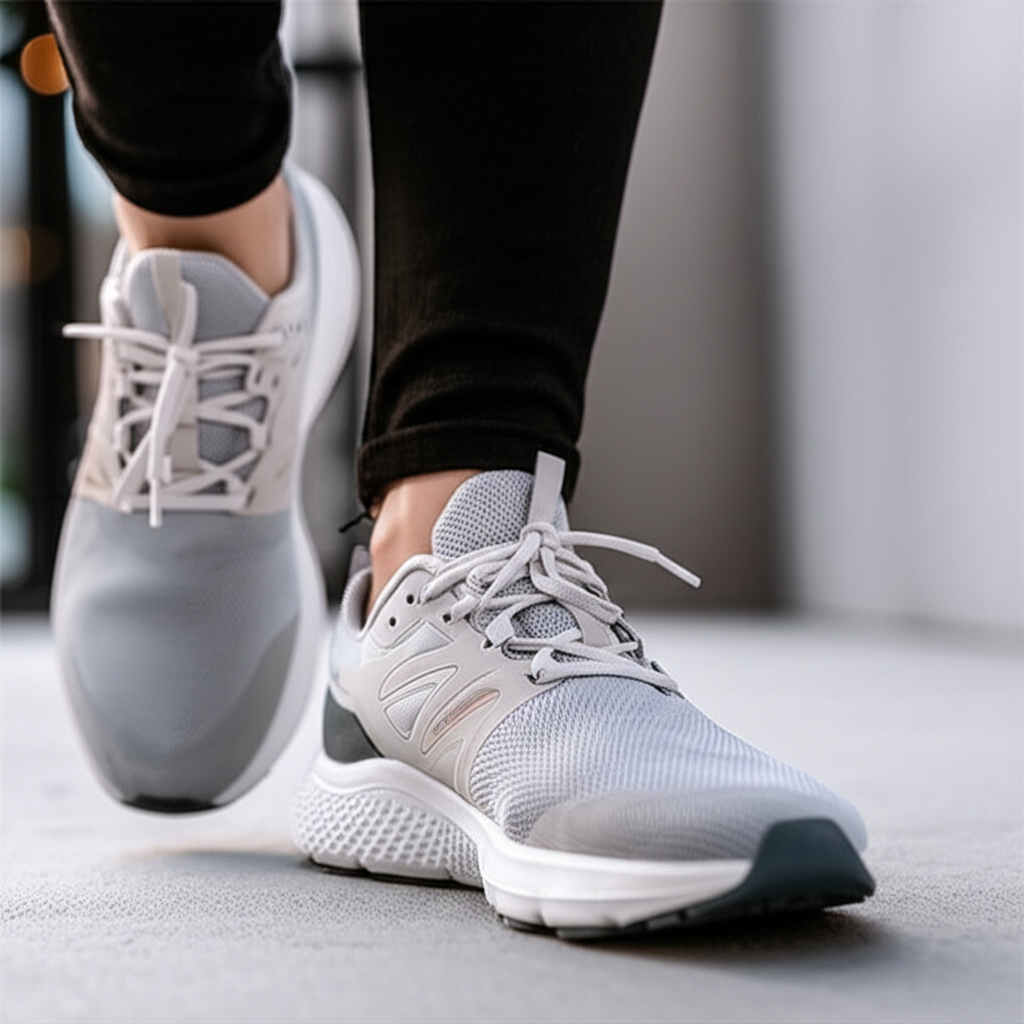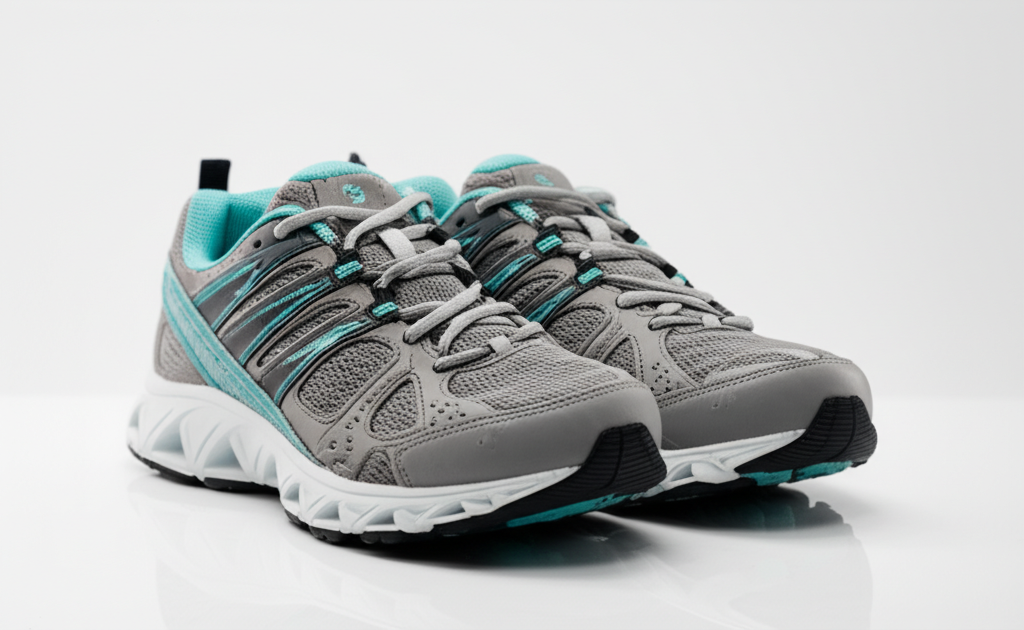No, walking shoes should not feel tight. The shocking truth is that properly fitting walking shoes should be comfortable from the moment you try them on, offering a snug but not constricting feel. A shoe that is too tight can lead to pain, blisters, and even long-term foot problems.
Key Takeaways
- Prioritize comfort and a slight wiggle room for toes.
- Avoid any pinching or pressure points when trying shoes.
- Understand the difference between snug and tight fits.
- Walk around in shoes before purchasing to test comfort.
- Consider your foot shape and arch type for best fit.
- Proper fit enhances walking comfort and prevents injuries.
Are Walking Shoes Supposed To Be Tight? The Shocking Truth!
Do your feet ever ache after a walk, even if you’re wearing what you thought were good walking shoes? You might be wondering if walking shoes are supposed to feel a bit tight. It’s a common question, and the answer might surprise you. Many people mistakenly believe a snug fit means a good fit, but this can lead to discomfort and even injury. Let’s uncover the truth about how walking shoes should feel so you can step out with confidence and comfort on every journey.
We’ll guide you through what to look for, common mistakes to avoid, and how to find that perfect pair that feels like a dream for your feet. Get ready to transform your walking experience from painful to pleasurable!
Understanding the “Perfect Fit” for Walking Shoes

When we talk about the “perfect fit” for walking shoes, we’re not talking about something that feels like a vice on your feet. Instead, think of it as a supportive hug. Your walking shoes should feel secure, like they are an extension of your foot, but never constricting. This means there’s enough room for your feet to function naturally as you walk, without being crammed or squeezed.
Imagine your foot as a dynamic entity. As you take a step, your foot naturally spreads out slightly and your toes flex. If your shoes are too tight, they prevent this natural movement. This can cause a cascade of problems, from immediate discomfort to more serious issues like bunions, hammer toes, or nerve compression.
The goal is a comfortable embrace, not a suffocating grip. This allows for proper circulation, prevents excessive friction, and supports your foot’s natural biomechanics. Let’s delve into what this actually feels like.
What “Snug” Really Means vs. “Too Tight”
There’s a crucial difference between a shoe that feels snug and one that is uncomfortably tight. This distinction is vital for anyone looking to buy walking shoes. Let’s break it down.
Snug Fit:
- Secure Feel: Your foot feels held in place without excessive movement inside the shoe.
- No Slipping: The heel doesn’t lift significantly when you walk.
- Comfortable Pressure: Gentle pressure around the midfoot and heel.
- Toe Space: About a thumb’s width of space between your longest toe and the front of the shoe.
- No Pinching: No specific points of pain or discomfort.
Too Tight Fit:
- Constriction: You feel pressure on the sides, top, or front of your foot.
- Numbness or Tingling: This can be a sign of restricted blood flow or nerve compression.
- Painful Spots: You can identify specific areas that hurt or rub.
- Toes Cramped: Your toes feel squished together or pressed against the front.
- Difficulty Wiggling Toes: You can’t freely move your toes up and down.
Think of it this way: a snug shoe supports your foot during activity, while a too-tight shoe impedes its natural function and causes pain. This is why understanding this difference is the first step to finding the right pair.
The Importance of Proper Footwear Fit for Walking

Why does all this matter so much? Your feet are your foundation. They carry you through every step of your day, and when they’re not happy, nothing else is either. For walking, where your feet are in constant motion, a proper fit is paramount.
Here’s why the right fit is so critical:
- Prevents Pain and Blisters: Shoes that are too tight or too loose rub against your skin, creating friction. This friction is the primary cause of painful blisters, calluses, and corns.
- Supports Natural Gait: Your feet have a natural way of moving when you walk. Shoes that are too tight can force your foot into an unnatural position, altering your gait and potentially leading to strain in your feet, ankles, knees, hips, and even your back.
- Ensures Proper Circulation: Constricting shoes can impede blood flow to your feet. This can lead to discomfort, numbness, and over time, contribute to more serious circulatory issues.
- Reduces Risk of Injury: Ill-fitting shoes offer less support and stability. This increases your risk of ankle sprains, falls, and other injuries, especially on uneven terrain.
- Enhances Comfort and Endurance: When your shoes fit well, you can walk farther and longer without discomfort. This encourages a more active lifestyle, which is beneficial for overall health.
- Promotes Foot Health: Over time, consistently wearing shoes that are too tight can contribute to structural changes in your feet, such as bunions, hammertoes, and neuromas (nerve pain).
The Mayo Clinic emphasizes the importance of proper footwear for overall foot health, stating that “Choosing the right shoes can help you prevent foot pain and common foot problems.” This underscores that your choice of walking shoes isn’t just about style or price; it’s about investing in your long-term health and comfort.
When to Try On Walking Shoes: The Best Time
You might not realize it, but the time of day you try on shoes can significantly impact the fit. Our bodies change throughout the day, and our feet are no exception. Understanding this can save you from making a purchase that feels great in the store but causes problems later.
The best time to try on walking shoes is in the late afternoon or early evening.
Here’s why:
- Feet Swell: Throughout the day, your feet naturally swell due to gravity and activity. Trying on shoes when your feet are at their largest ensures that the shoes will be comfortable even after hours of walking or standing.
- Avoids “Morning Fit” Issues: If you try on shoes first thing in the morning, they might feel fine then, but become uncomfortably tight as your feet swell during the day.
This simple tip can make a world of difference in finding a pair that truly fits and remains comfortable throughout your entire walk. Don’t overlook this crucial detail!
How to Test the Fit of Walking Shoes

Once you’ve got your shoes on at the optimal time of day, it’s time to put them to the test. Don’t just stand there! A proper fit check involves more than just slipping them on.
Here’s your step-by-step guide to testing the fit:
- Put Both Shoes On: Always try on both the left and right shoe. Most people have slightly different sized feet, and you need to ensure both feel comfortable.
- Wear Appropriate Socks: Bring the type of socks you normally wear for walking. Thicker socks will take up more space, so this is essential for an accurate fit.
- Check the Length: With the shoe on, slide your foot forward until your toes lightly touch the front. You should be able to slip one finger (your index finger) between the back of your heel and the shoe’s heel counter. This is approximately a thumb’s width of space, giving your toes room to move.
- Assess the Width: The widest part of your foot should fit comfortably within the widest part of the shoe (the ball of the foot). There should be no pinching or bulging over the sides of the sole.
- Examine the Arch Support: The shoe’s arch should align with your foot’s natural arch. If it feels too high or too low, it won’t provide adequate support.
- Test the Heel: Your heel should feel secure. When you walk, your heel should not slip up and down excessively. A little bit of movement is okay, but significant slippage indicates a poor fit.
- Walk Around: This is the most important step! Walk around the store for at least 5-10 minutes. Go up and down stairs if possible. Pay attention to any pressure points, rubbing, or discomfort.
- Stand on Your Toes: Briefly stand on your tiptoes. If the shoes are too tight in the toe box or instep, you’ll feel it immediately.
If at any point during this process you feel significant discomfort, pinching, or pressure, the shoes are likely not the right fit. Don’t assume they will “break in” to fit perfectly; while some shoes soften, painful tightness rarely resolves.
Common Mistakes When Buying Walking Shoes
Navigating the world of shoe shopping can be tricky. Many well-intentioned buyers fall into common traps that lead them to choose ill-fitting walking shoes. Being aware of these pitfalls can help you make a smarter decision.
Here are some mistakes to avoid:
- Buying Based on Size Alone: Shoe sizes can vary significantly between brands and even models within the same brand. Relying solely on your usual size number is a mistake. Always try them on!
- Assuming Shoes Will “Stretch”: While some materials might soften slightly, shoes that are genuinely too tight will likely remain uncomfortable. It’s better to find a shoe that fits well from the start.
- Not Trying Them On Later in the Day: As discussed, feet swell. Trying on shoes in the morning can lead to purchasing a pair that becomes painfully tight by the afternoon.
- Ignoring Friction Points: Any rubbing or pinching you feel in the store is a red flag. These spots will only get worse with prolonged walking.
- Buying Shoes That Are Too Big: While we’re focusing on tightness, shoes that are too loose are equally problematic. They cause your feet to slide, leading to blisters and instability.
- Not Considering Sock Thickness: Wearing thin dress socks to try on thick athletic socks will give you a misleading fit. Always use the socks you plan to wear for walking.
- Being Influenced by Looks Over Comfort: While style is important, it should never come at the expense of comfort and proper fit for walking shoes.
- Not Walking Enough in the Store: A quick slip-on isn’t enough. You need to simulate actual walking to identify potential issues.
Avoiding these common errors will significantly increase your chances of finding walking shoes that support your feet and keep you comfortable on your journeys.
Factors Influencing Shoe Fit Beyond Tightness
Beyond just the feeling of tightness, several other factors play a crucial role in how well a walking shoe fits and performs for you. Understanding these elements will empower you to make a more informed choice.
Foot Shape and Volume
Everyone’s feet are unique. Some people have wide feet, others narrow. Some have high arches, while others have flat feet. The overall volume of your foot (how much space it takes up vertically) also varies.
- Width: Many shoe brands offer different width options (e.g., Narrow, Medium, Wide, Extra Wide). If a standard width feels constricting on the sides, look for a wider option.
- Volume: If the shoe feels too tight across the top of your foot (the instep), it might be a volume issue. Some shoes have a lower or higher instep profile.
- Toe Box Shape: Look for a toe box that is anatomically shaped, allowing your toes to spread naturally. Avoid shoes that taper to a sharp point.
Arch Type
Your arch type affects how your foot distributes impact and pressure. Walking shoes should complement your natural arch.
- High Arch: You may need shoes with good cushioning and flexibility to absorb shock.
- Normal Arch: Most standard walking shoes will work well, offering a balance of support and cushioning.
- Flat Arch (Low Arch): You might benefit from shoes with enhanced stability and motion control to prevent overpronation (the foot rolling inward excessively).
You can determine your arch type by doing the “wet test.” Wet your feet, step onto a piece of paper or cardboard, and examine the imprint. A full imprint suggests flat feet, a partial imprint suggests a normal arch, and only the heel and ball of the foot showing suggests a high arch.
Materials and Construction
The materials used in a shoe’s construction significantly impact its feel and fit.
- Uppers: Breathable mesh or knit uppers can offer more flexibility and adapt to the foot’s shape. Leather or synthetic uppers might offer more structure and durability but can sometimes be less forgiving.
- Midsole: This is where the cushioning and shock absorption happen. Materials like EVA (Ethylene Vinyl Acetate) and PU (Polyurethane) offer different levels of softness and responsiveness.
- Outsole: The rubber sole provides traction and durability. Its flexibility should allow for a natural stride.
The way a shoe is constructed, including how the upper is attached to the sole, also affects its overall flexibility and support. A well-constructed walking shoe will flex naturally at the ball of the foot.
Pro Tip: When trying on shoes, gently bend the shoe at the ball of the foot. It should bend easily at that point, not in the middle of the arch or only at the toe. This indicates good flexibility for walking.
When Do Walking Shoes Need to Be Replaced?
Even the best walking shoes don’t last forever. Over time, their cushioning and support degrade, even if they still look good on the outside. Wearing worn-out shoes can lead to the same problems as wearing ill-fitting ones.
Here’s how to tell when it’s time for a new pair:
- Mileage: For most running or walking shoes, the general guideline is to replace them every 300-500 miles (480-800 km).
- Visible Wear: Check the outsole for significant wear patterns. If the tread is smooth in places or uneven, it’s a sign.
- Compressed Midsole: The cushioning in the midsole can become compressed, losing its ability to absorb shock. Look for wrinkles or creasing on the sides of the midsole.
- Loss of Support: The shoe might feel “flat” or less supportive than it used to.
- New Aches and Pains: If you start experiencing new foot, knee, or hip pain after walks, your shoes might be the culprit.
- Heel Counter Damage: If the back of the shoe (heel counter) becomes misshapen or worn, it compromises heel support.
Regularly assessing your walking shoes will help you stay ahead of potential discomfort and injury. Think of replacing your shoes as essential maintenance for your body.
Walking Shoe Features to Look For
When shopping for walking shoes, knowing what features to prioritize can make the selection process much easier. These features are designed to enhance comfort, support, and performance for walking.
Cushioning
Good cushioning absorbs shock, reducing impact on your joints. Look for shoes with adequate padding in the midsole, especially in the heel and forefoot.
Support and Stability
Depending on your foot type, you might need shoes that offer neutral support or stability features. Stability shoes help control overpronation, while neutral shoes allow the foot to move more naturally.
Flexibility
A good walking shoe should be flexible enough to bend with your foot at the ball, allowing for a natural stride. It shouldn’t be overly stiff.
Breathability
Shoes with breathable uppers (like mesh or engineered knit) help keep your feet cool and dry, preventing blisters and discomfort, especially on longer walks or in warm weather.
Traction
The outsole should provide good grip on various surfaces you might encounter, from pavement to light trails. Look for a durable rubber sole with a sensible tread pattern.
Fit and Comfort
This is the overarching feature. The shoe should feel comfortable from the moment you put it on, with ample toe room and no pressure points. This includes adequate width and depth in the toe box.
Weight
Walking shoes should be relatively lightweight to avoid fatigue during long walks. Very heavy shoes can feel clunky and cumbersome.
Here’s a quick comparison of what to look for:
| Feature | Why It Matters for Walking | What to Look For |
|---|---|---|
| Cushioning | Absorbs shock, reduces joint impact. | Plush feel, adequate padding in heel and forefoot. |
| Support/Stability | Keeps foot aligned, prevents excessive rolling. | Neutral for most, stability features for overpronators. |
| Flexibility | Allows natural foot movement during stride. | Bends easily at the ball of the foot. |
| Breathability | Keeps feet cool and dry, prevents blisters. | Mesh or knit uppers. |
| Traction | Provides grip on various surfaces. | Durable rubber outsole with good tread. |
| Fit | Prevents pain, blisters, and injury. | Snug heel, roomy toe box, no pressure points. |
Where to Find Authoritative Information on Foot Health
When making decisions about your health and comfort, especially regarding footwear, it’s always wise to consult reliable sources. Understanding foot mechanics and the impact of shoes is crucial.
For in-depth, evidence-based information, consider these authoritative resources:
- American Podiatric Medical Association (APMA): The APMA offers a wealth of information on foot health, common conditions, and shoe selection advice. Their website is a great resource for understanding foot anatomy and care. You can find their guidance on choosing shoes here: APMA Shoe Tips.
- National Institutes of Health (NIH): The NIH provides research and health information on a wide range of topics, including musculoskeletal health. While not solely focused on footwear, their resources can offer broader context on how physical activity and proper support impact overall well-being.
- Mayo Clinic: Known for its comprehensive medical information, the Mayo Clinic website offers articles on foot pain, common foot problems, and the importance of proper footwear. Their advice is medically reviewed and accessible.
Consulting these sources can provide you with a solid foundation of knowledge to make confident choices about your walking shoes and overall foot health.
Frequently Asked Questions About Walking Shoe Fit
Q1: Are my feet supposed to feel a little sore after buying new walking shoes?
No, your walking shoes should not feel sore. While new shoes might feel different, any pain, pinching, or significant discomfort is a sign that they are not the right fit. Comfort should be present from the start.
Q2: Can I wear running shoes for walking?
Yes, you can, especially if they fit well and are comfortable. However, running shoes are designed with specific motion and impact in mind for running. Dedicated walking shoes often offer more flexibility and cushioning optimized for the forward motion of walking.
Q3: How much space should I have in the toe box of my walking shoes?
You should have about a thumb’s width of space between your longest toe and the front of the shoe. This allows your toes to splay naturally without hitting the end of the shoe.
Q4: What if one foot is slightly larger than the other?
Always fit your shoes to your larger foot. You can often make adjustments for the smaller foot using insoles or thicker socks. If the size difference is significant, consult a shoe fitter for advice.
Q5: Do walking shoes need a break-in period?
Ideally, good walking shoes require minimal to no break-in period. They should feel comfortable right away. Some shoes might soften slightly with a few wears, but this shouldn’t involve enduring pain.
Q6: Can wearing tight shoes cause long-term foot problems?
Yes, consistently wearing shoes that are too tight can contribute to conditions like bunions, hammertoes, corns, calluses, ingrown toenails, and nerve issues like neuromas.
Q7: Should my heel slip at all in walking shoes?
A very small amount of heel lift might be acceptable, but your heel should feel secure. Significant slipping indicates the shoe is either too wide, too deep in the heel, or the wrong shape for your foot. This can cause blisters and instability.
Conclusion
The “shocking truth” about walking shoes is that they are absolutely not supposed to be tight. Instead, they should offer a comfortable, secure fit that allows your feet to move naturally. Prioritizing comfort, checking for adequate toe room, and testing the fit by walking around are essential steps in finding the perfect pair. Remember to try on shoes later in the day, wear your walking socks, and pay attention to any signs of pinching or pressure. By avoiding common mistakes and understanding key features like cushioning, support, and breathability, you can confidently select walking shoes that will keep your feet happy, healthy, and comfortable on every adventure.

